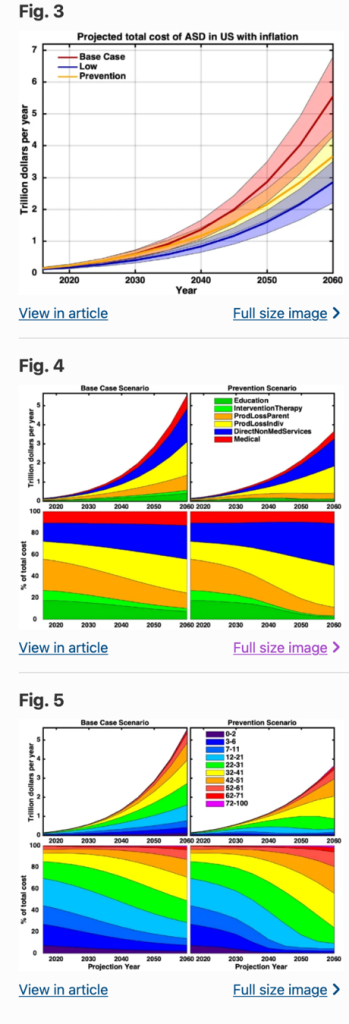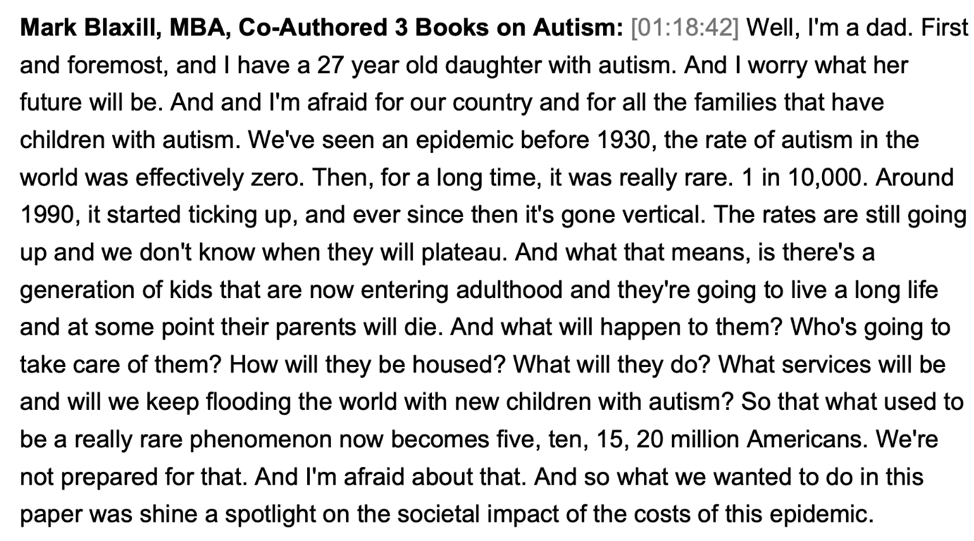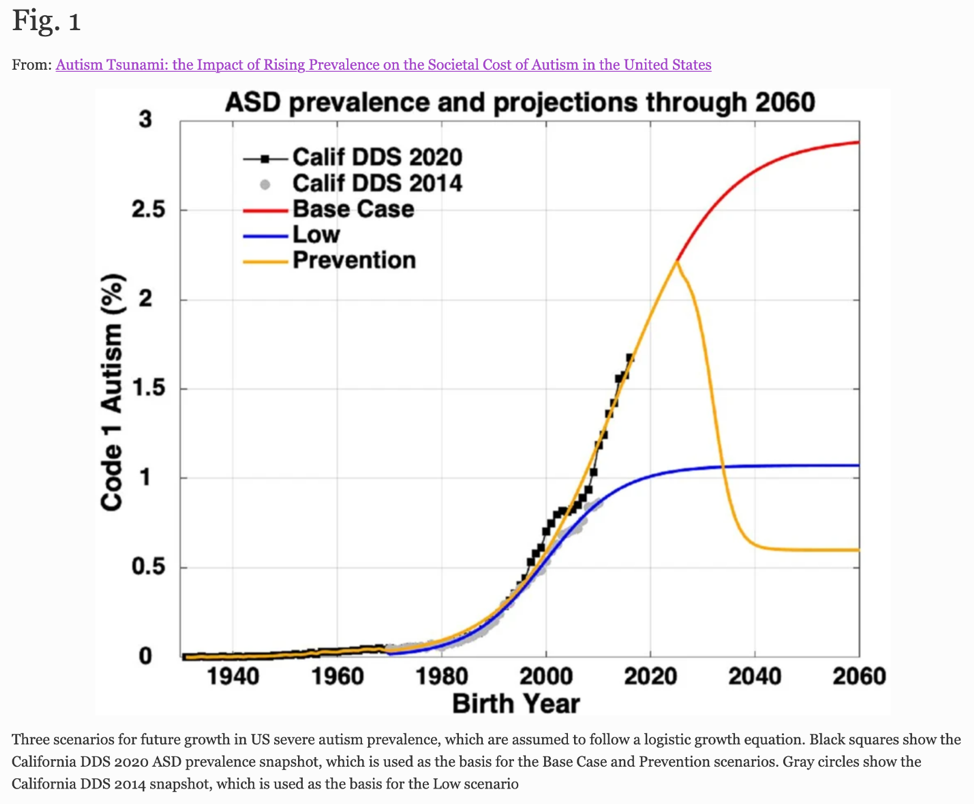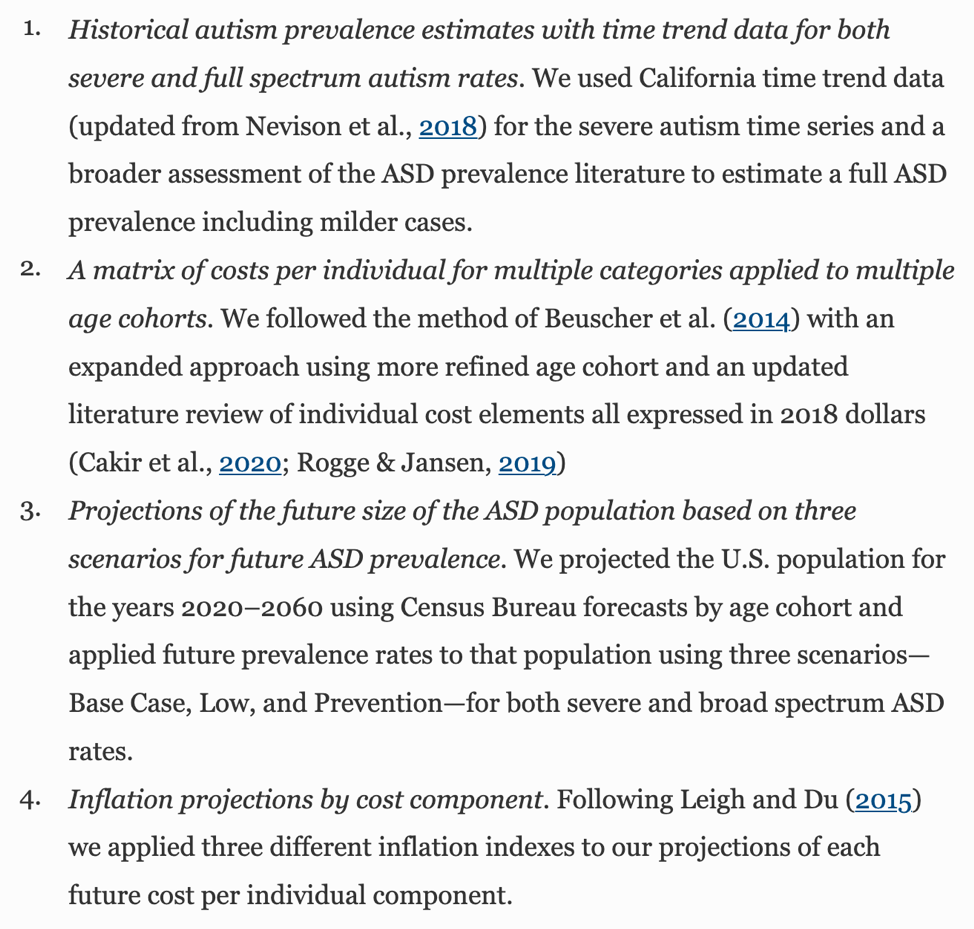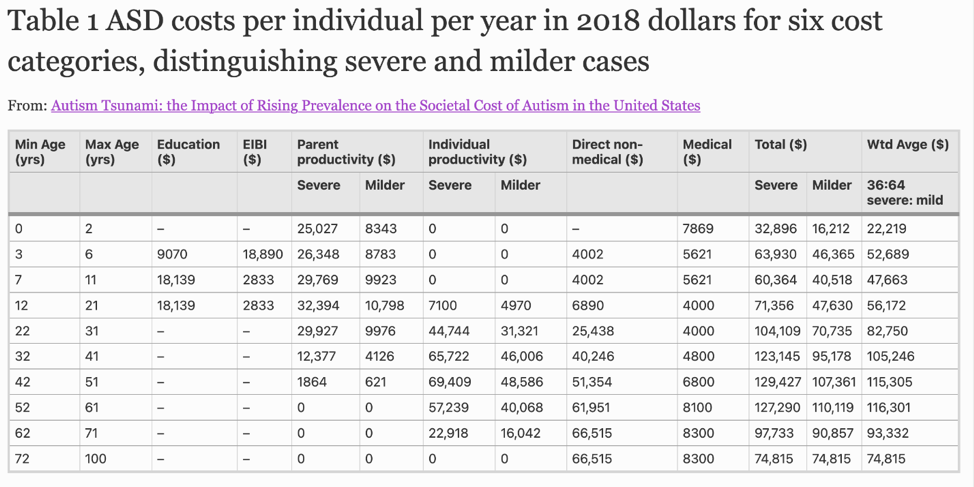Del Bigtree Discusses the Escalating Cost of the Autism Tsunami
Updated
Autism is on the rise, and the economic costs are projected to be staggering, according to a paper by Mark Blaxill, Political Economist Toby Rogers, Ph.D., M.P.P., and Cindy Nevison, Ph.D. Blaxill, Rogers, and Nevison studied the “monumental rise” in Autism and projected its societal and economic cost. Blaxill has co-authored three books on Autism. Nevison is the author of eight papers on Autism and prevalence trends. Their peer-reviewed study, entitled “Autism Tsunami: the Impact of Rising Prevalence on the Societal Cost of Autism in the United States,” looked at the “actual data of autism time trends” and then the two built a model based on their projections with “population projections” in mind.
Del Bigtree, who has long been concerned about the meteoric rise in Autism due to vaccines, interviewed Blaxill and Nevison to highlight the importance of their findings. The two researchers shared that they believe their study differs from others because it produces a “more realistic, age-stratified projection of how things would evolve into the future.”
Only one other study, an analysis by Leigh and Du (2015), is “most directly comparable to” theirs because it “provides annual U.S. cost estimates both for the present day (2015) and projected into the future (2025).” Even so, there are a number of ways the Leigh and Du study falls short of painting a complete and accurate picture. And, as thoughtful as they have been in their analysis, Nevison and Blaxill also recognize that even their study may be based on assumptions that may not adequately represent the future.
Model Inputs and Three Future Prevalence Scenarios
The inputs for their model “include ASD prevalence, census population projections, six cost categories, ten age brackets, inflation projections, and three future prevalence scenarios.” The three prevalence scenarios, Base, Low, and Prevention, are “assumed to reflect the most severe autism cases,” and the total ASD prevalence is calculated by adding in the milder ASD cases,” with a “scaling approach and scaling factors” described in the paper. The graphs below show the various ways they dissected their projections.
Personal Experience and Body of Evidence Provided a Foundation for Their Study
Blaxill is the father of a 27-year-old autistic daughter. He has a personal understanding of some of the emotional and economic costs. However, he believes the societal costs are and will be equally impactful. He told Bigtree there had been a “vertical” trajectory in the rate of Autism starting around 1990. Before 1930, the rate of Autism was “effectively zero,” very rare. It then “ticked up” and “[went] vertical” in the early 90s.
Del Bigtree/Blaxill/Interview/https://thehighwire.com/ark-videos/the-autism-tsunami/
Blaxill and Nevison examined many other studies to evaluate how to approach the topic best. The other research is well-cited in the abstract, revealing a substantial body of evidence. The paper also notes that a critical part of the evidence emerged when researchers began to track data from California and the U.S. Department of Education to look at prevalence rates. The CDC later jumped in “in parallel,” focusing on the “full range of ASDs” and confirmed higher rates but reached “no conclusions on time trends.”
Those surveys led to the establishment by the CDC of the Autism and Developmental Disabilities Monitoring (ADDM) Network, which began publishing bi-annual reports on autism prevalence (CDC/ADDM, 2007–2020). In addition, the National Center of Health Statistics (NCHS) and the Census Bureau began to disseminate household surveys asking parents to answer questions about whether a doctor or health professional had ever told them they might have a child with “Autism, Asperger’s disorder, pervasive developmental disorder, or autism spectrum disorder.” The cited research was informative, but their study sought to take an “authoritative” look at “population trends in the U.S. ASD rates over time and by severity” to eventually project the economic costs to society.
Future Costs Will Be Staggering: Policy Will Be Mitigating Key Factor
Blaxill’s concerns for the future of these autistic individuals are fundamental to the study. Many studies focus on the burden on the family. However, this study distinguishes itself from many others because it expands its analysis to the burden on “populations as a whole.” He and Nevison wanted to quantify the actual effects and economic costs to society with an eye on the “well-being of individuals with ASD” and policy decisions that might mitigate the burden on society.
Autistic individuals can be extremely trying on a family’s emotional wherewithal. Divorce rates are high in families with an autistic child. Medical and educational costs can be crippling. Many autistic individuals require ongoing care as they age. They may outlive their parents. The question of who will care for them and how those costs are covered cannot be ignored. The costs of Autism are also “unique,” according to Nevison.
According to the study, “the costs of autism are higher than for other disorders (e.g., cancer, stroke, and heart disease) because autism strikes in childhood and affects the entire lifespan (Beuscher et al., 2014; BJFM, 2014)” As the numbers become more staggering, the societal impact and economic costs will be substantial.
While Nevison and Blaxill assert they were conservative in their projections, the economic impact is still devastating. According to Nevison, their study results “project[s] a total population-wide autism spectrum disorder cost in the U.S. of $5.54 trillion per year by 2060.” She continued, “accounts for inflation with potential savings of 1.9 trillion per year with pursuit of ASD prevention.”
“Future ASD costs increase dramatically: total base-case costs of $223 (175–271) billion/year are estimated in 2020; $589 billion/year in 2030, $1.36 trillion/year in 2040, and $5.54 (4.29–6.78) trillion/year by 2060, with substantial potential savings through ASD prevention. Rising prevalence, the shift from child to adult-dominated costs, the transfer of costs from parents onto government, and the soaring total costs raise pressing policy questions and demand an urgent focus on prevention strategies.”
“As we show in this paper, the cost patterns with autism are also unique in that sharply rising prevalence has created a massive wave of costs that will continue for decades if policymakers and the public fail to grasp the possibility and importance of prevention.”
They urge policymakers to approach the crisis more urgently to help avoid unnecessary societal burdens. One of the scenarios the researchers model in the graph below is a Prevention scenario. Using California Department of Developmental Services (CDDS) data, the chart below shows the effects of preventative measures in the form of a yellow “S” curve. It shows a “substantial reduction in the economic burden.” The dots creeping up the curve are “reality,” according to the data. All three curves show a leveling out or “flattening” because the researchers recognize the “increases have to stop.” The blue line is the most conservative projection; however, Nevison told Bigtree they already know “the low case is not realistic” when they look at the data.
Future ASD Projection/https://link.springer.com/article/10.1007/s10803-021-05120-7
Nevison and Blaxill did a deep dive into the costs of Autism so that they would be able to calculate the “annual cost of disease projections for ASD through 2060.” They did so with four elements in mind.
Autism Tsunami/https://link.springer.com/article/10.1007/s10803-021-05120-7
Costs included things like non-medical services, loss of individual productivity, parental productivity loss, medical, and more while distinguishing those costs by the severity of the case and stratified by age. Their methodology is well-documented in the paper:
Costs/https://link.springer.com/article/10.1007/s10803-021-05120-7#Tab1
At one point in the interview, Bigtree hauls out Blaxill’s 2012 testimony before a congressional committee. Blaxill walks the committee members through the usual tropes that seek to debunk the sharp rise in the prevalence of Autism. He also posits that some believe the “CDC is covering up the evidence surrounding autism’s environmental causes.” He also brings up many pressures that cause agencies like the NIH to “manipulate numbers” and research to “avoid the inconvenient reality of the autism epidemic.”
“Some people claim this isn’t real, that we’re just doing better diagnosing. That’s just wrong. If you read the old literature, the old surveys, they looked for everybody, and they couldn’t find people. They didn’t miss 99% of the children with Autism. It’s not hard to find a child with Autism. It’s obvious when they’re autistic. The notion that we’re just doing better diagnosing even in the CDC studies, they’re using the same methodology. So when you see those numbers rising, that’s not because the methods are changing. It’s because there are more cases In the midst of this crisis, the federal agencies responsible for the health of our children have failed in their duty.”
Blaxill and Nevison say they don’t “have a dog in the fight” when it comes to proving the prevalence of ASD is rising exponentially. There have been efforts to retract their paper, and the pair has faithfully addressed every concern. Blaxill believes they are “basically locking down” because the “autism problem is too big to handle.”
The two researchers are resolute. Blaxill told Bigtree if those who would retract their paper wish to dispute their methodology or model, “show us what we did wrong.” Many well-examined papers were retracted during the pandemic for reasons that, to this day, are unknown. The robust scientific debate was all but shut down, with real-world consequences, leaving many without the life-saving treatments they deserved. All of it was because the pesky dissenters dared to buck the narratives that powerful forces wanted us to believe. We would be well served by Nevison’s answer to the anonymous critics of her paper, “Let everyone view the data and judge for themselves. Let the scientific discussion play out.







